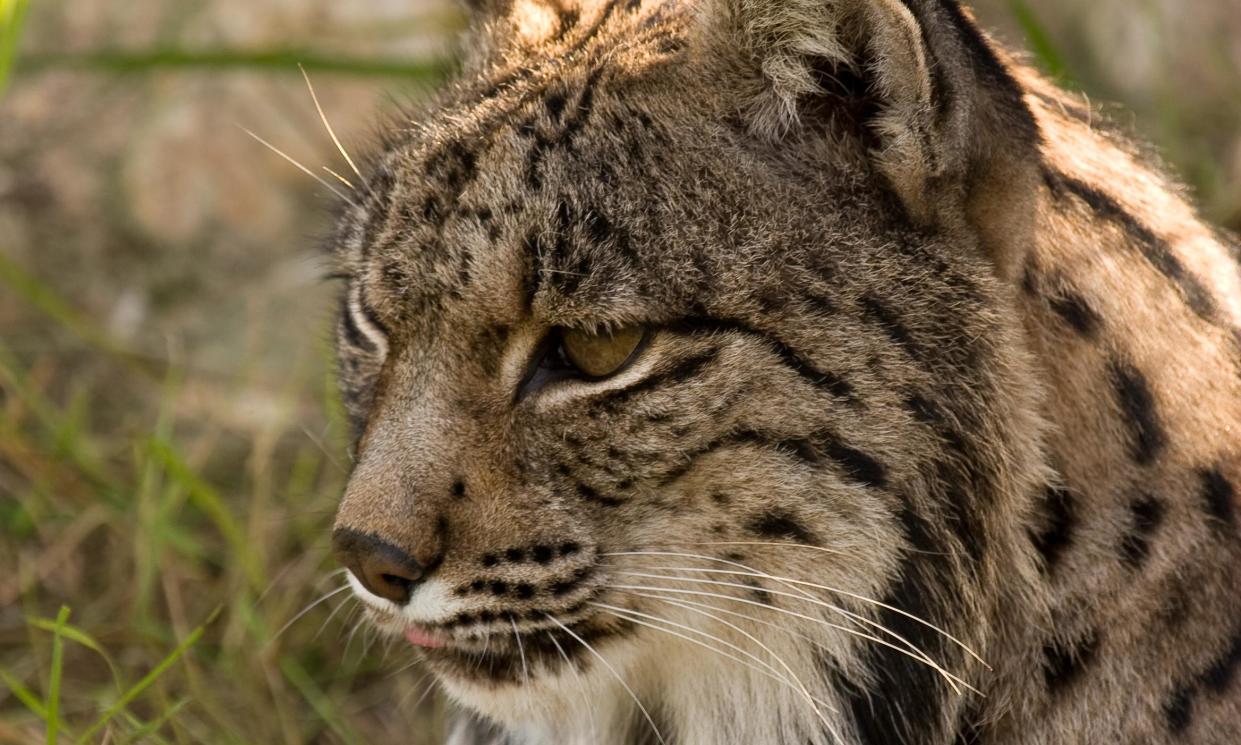Iberian lynx that helped save species from extinction dies aged 20

A grumpy, strong-willed Iberian lynx called Aura that helped snatch her species from the jaws of extinction, and whose genes live on in more than 900 of the spotted and tufty-eared felines, has died in southern Spain at the record age of 20.
When Aura was born in Andalucía’s Doñana national park in 2002, there were a mere 94 Iberian lynxes on the peninsula. Decades of eradication efforts, together with a massive drop in rabbit numbers because of myxomatosis and rabbit hemorrhagic disease – not to mention human encroachment – had left the animals on the brink of disappearing.
Today, thanks to a sustained conservation and breeding programme, there are more than 1,300 lynxes.
Aura was three weeks old and weighed just 702g when she was captured and brought into the pioneering Ex-situ Iberian lynx conservation programme, and was pivotal in reversing the decline. Over the course of her two decades of life, she gave birth to 14 kittens and, through them, created an impressive dynasty.
“When she was born, the species was in danger of extinction,” said Antonio Rivas, who runs the El Acebuche breeding centre in the Andalucían province of Huelva, where Aura lived.
“When she died, 20 years later, there were 14 population centres in both Spain and Portugal, with 1,365 wild animals. It’s a phenomenal legacy and she did a great job.”
While the decision to remove young lynxes from their natural surroundings and breed them in captivity hadn’t been an easy one, he added, it had certainly paid off.
Rivas also shared some of his recollections of Aura and her strong personality.
“I’ve worked here for 17 years, so she was already here when I arrived,” he said. “I’ll always remember her as a bit of a grumpy one because she had to compete with another female lynx called Saliega, who became very famous because she was the first lynx have a litter in captivity.
“Aura had her first litter a couple of years later. She was a bit grumpier and a bit more aggressive than Saliega. But Aura was a magnificent animal and she looked after her litters beautifully.”
Rivas said Aura had always known what she wanted when it came to giving birth and had turned her nose up at the centre’s specially made birthing pens.
“She liked to give birth out in the open,” he said. “She needed peace and to feel the morning and air and the warmth of the afternoon. We had to put up a canopy when she was giving birth once because it was raining heavily and we were worried about the litter. She was very demanding and she had a lot of personality. But she was great.”
As Iberian lynxes tend to live to about the age of 15 in the wild, Aura’s death at the age of 20 years and six months makes her the longest-lived Iberian lynx on record.
Rivas said Aura had served as a wonderful advertisement for her species until the very end of her life.
“When she stopped having litters in 2018, she was moved to a space where the public could see her and learn about lynxes and the importance of protecting wild animals and natural spaces,” he said.
“In the last years of her life, she enjoyed retirement as an ambassador. Up to her very last day, she was contributing to the conservation of the Iberian lynx.”
Despite the success of the conservation programme, however, lynxes still face threats on roads and in wilder areas. The ecosystems of the Doñana, home to a large population of the felines, are suffering because of climate breakdown, farming, mining pollution and marsh drainage.
In September, the largest permanent lake in the park – one of Europe’s biggest and most important wetlands – shrivelled to a small puddle as years of drought and overexploitation took their toll on the aquifer that feeds the area and sustains millions of migrating birds.

 Yahoo News
Yahoo News 
